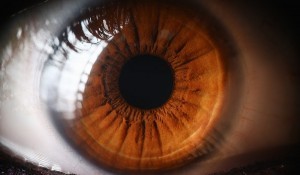
Inherited retinal diseases (IRDs), single-gene disorders affecting the retina, are very difficult to diagnose since they are uncommon and involve changes in one of many candidate genes. Outside specialist centres, there are few experts who have adequate knowledge of these diseases, and this makes it difficult for patients to access proper testing and diagnosis. But now, researchers from the UK and Germany have used artificial intelligence (AI) to develop a system that they believe will enable more widespread provision of testing, together with improved efficiency.
Dr Nikolas Pontikos, a group leader at the UCL Institute of Ophthalmology and Moorfields Eye Hospital, London, UK will tell the annual conference of the European Society of Human Genetics today (Saturday 10 June) about his team’s development of Eye2Gene, an AI system capable of identifying the genetic cause of IRDs from retinal scans. “Identifying the causative gene from a retinal scan is considered extremely challenging, even by experts. However, the AI is able to achieve this to a higher level of accuracy than most human experts,” says Dr Pontikos.
The researchers were able to utilise Moorfields Hospital’s vast database of information on IRDs, covering over 30 years of research. Over 4000 patients have received a genetic diagnosis as well as detailed retinal imaging at Moorfields, making it the largest single centre dataset of patients with both retinal and genetic data.
Identification of the gene involved in a retinal disease is often guided by using the patient’s phenotype defined using the Human Phenotype Ontology (HPO). The HPO involves the use of standardised and structured descriptions of medical terms of a patient’s phenotype, which are observable characteristics of an individual resulting from the expression of genes, to allow scientists and doctors to communicate more effectively. “However, HPO terms are often imperfect descriptions of retinal imaging phenotypes, and the promise of Eye2Gene is that is can provide a much richer source of information than HPO terms alone by working directly from the retinal imaging,” says Dr Pontikos.
The team benchmarked Eye2Gene on 130 IRD cases with a known gene diagnosis for which whole exome/genome, retinal scans, and detailed HPO descriptions were available, and compared their HPO gene scores with the Eye2Gene gene scores. They found Eye2Gene provided a rank for the correct gene higher or equal to the HPO-only score in over 70% of cases.
In the future, Eye2Gene could be easily incorporated into standard retinal examination, first as an assistant in specialist hospitals in order to get a second opinion, and eventually as a "synthetic expert” where such a person is not available. “Ideally, Eye2Gene software would be embedded into the retinal imaging device,” says Dr Pontikos.
Before its use becomes more widespread, the system will need to go through regulatory approvals to demonstrate safety and efficacy. This future use of AI has the potential to become a more effective, less invasive and more widely accessible approach to diagnosing patients, and to improve their management and treatment. “We need further evaluation of Eye2Gene in order to assess its performance for different types of IRD patients from different ethnicities, different types of imaging devices, and in different types of settings, for example primary vs secondary care. Clinical trials will be required before our system can be deployed in clinics as medical device software,” says Dr Pontikos.
“We all know that a picture is worth a thousand words, so we had some expectation that retinal scans interpreted by AI could out-perform HPO terms only. But we were still pleasantly surprised to see that, even when quite specific HPO terms were used, Eye2Gene could still do as well or better than an HPO-only approach. We hope that AI will help patients and their families by making specialist care more efficient, accessible, and equitable,” he will conclude.
Professor Alexandre Reymond, chair of the conference, said: “While real life experts are essential, the use of AI will help in mitigating biases and will allow diagnoses for all in the future.”






























 Back to News
Back to News

























